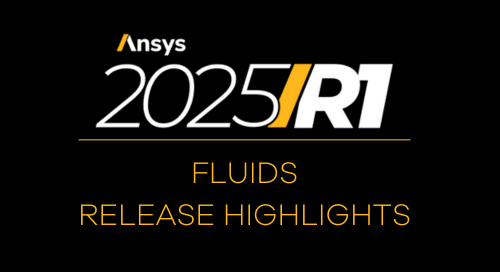Is it time to upgrade?
Since Ansys released the latest multi-GPU solver in its Fluent CFD software in January 2023, there has been a lot of talk about how much it speeds up calculation times. As an Ansys Elite Channel Partner at the forefront of simulation-driven design, we wanted to run comparison tests ourselves, so we could make recommendations via first-hand experience.
Based on our tests, companies that switch from running CFD simulations on CPU solvers to Ansys Fluent with a Native GPU solver can expect to see a significant increase in simulation throughput for a minimal financial investment.
Here are highlights of the tests and results. For details, watch this recorded webinar.
About the tests
Test Setup
Simulations were run for a variety of mesh sizes, cell types, solver settings, and physics using the new native Ansys Fluent GPU solver. Comparison runs were performed using Rand Simulation’s high-performance CPU cluster.
We ran our CPU simulations on Rand SIM’s CFD cluster:
- CPU: Xeon® Gold 6242
- MSRP: $3000 + RAM + Motherboard
- CPU Drivers: N/A
We ran our GPU simulations on prep/post machines:
- GPU: Quadro RTX8000 and RTX4000
- MSRP: $5,000 and $1,800 respectively
- GPU Drivers: Release 5/11/23, Version 30-0-14-7444
We recorded all times after convergence was achieved.
Case studies (*Simulation imagery below)
Type:
|
External Flow
Over Passenger Vehicle
|
Internal Flow
in Mixing
Tank
|
Compressible Flow in Generic Combustor
|
Vehicle
Exhaust
Model
|
Size:
|
2M cells
|
4M cells
|
24M cells
|
33M cells
|
Cell Type:
|
Projected Octree
|
Polyhedral
|
Poly-hex
|
Mixed
|
Solver:
|
Pressure-based segregated solver, Least Square cell-based, steady
|
Pressure-based segregated solver, Least Square cell-based, steady
|
Pressure-based segregated solver, Least Square cell-based, steady
|
Pressure-based coupled solver, Least Squares cell based, steady
|
Models:
|
GEKO k-omega Turbulence
|
GEKO k-omega Turbulence, MRF
|
GEKO k-omega Turbulence, Ideal gas compressible
|
SST k-omega Turbulence
|
Our findings
Test 1 – External Flow Over Passenger Vehicle: GPU solver, about as fast as 25 CPU cores
Test 2 – Internal Flow in Mixing Tank: GPU solver, about as fast as 32 CPU cores
Test 3 – Compressible Flow in Generic Combustor: GPU solver was roughly as fast as 90 CPU cores
Test 4 – Vehicle Exhaust Model: GPU solver was as fast as 70 CPU cores
Limitations
As an Ansys Elite Channel Partner, our goal is to support our customers’ growth. By sharing a clear picture of software advancements and limitations, we hope to educate current and prospective customers, so they can make more informed decisions.
A summary of our findings:
-
Coupled solver is coming in a future release, only segregated solver available currently
-
This will allow for more stable simulations, at the cost of a small reduction in speed and memory usage
-
-
Not all reports are accessible at runtime
-
Hybrid initialization was somewhat unstable
-
No pressure far-field boundary condition
-
Slightly slower to initialize (by roughly a minute)
-
Multiple users on a machine was detrimental to GPU performance
Recommendations
Teams that prefer working with state-of-the-art technology, need faster simulations, and can live with the additional limitations of using the GPU solver, should take a serious look at the Ansys Fluent native GPU solver.
For an investment of less than $10,000 (the GPU at $1,800 and upgrade from Premium to Enterprise at $7,000), first-year paid-up costs, companies will greatly improve their productivity, innovation, and ability to answer questions in minutes or hours instead of days.
Ready to discuss your specific situation? Contact us today.
*Sample simulation imagery
External Flow Over Passenger Vehicle
Internal Flow in Mixing Tank
Compressible Flow in Generic Combustor
Vehicle Exhaust Model
About the Author
More Content by Alex Lefebvre











